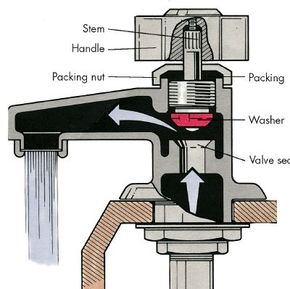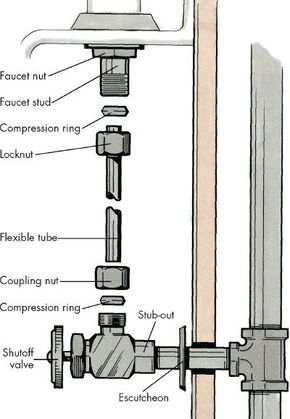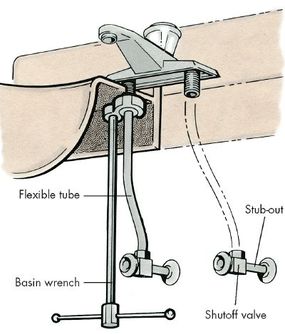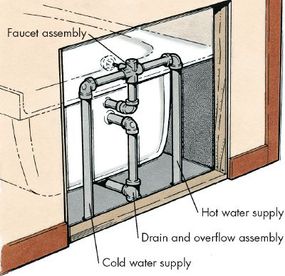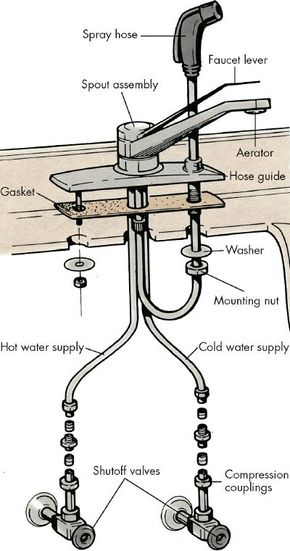Faucets are a key part of your home for an obvious reason: They dispense water. Therefore, keeping your faucets in working condition is of great importance. A number of things can go wrong with your faucets, from leaks to noise. Sometimes you'll need to replace a faucet altogether to solve the problem. In this article, we'll show you how to make a number of basic repairs to your home's faucet system, including to spray hoses. We'll start by addressing leaky faucets.
Repairing a Leaky Faucet
A dripping faucet is the most common plumbing problem as well as one of the easiest to repair. Yet many people ignore it and leave the dripping faucet unrepaired. That costs money. A steady drip can waste $20 or more in water in a short time. Multiply that figure by the number of faucet drips in your home, and you can calculate how much of your money is literally going down the drain. The waste from a dripping hot water faucet is even more because you're also paying to heat the water before it goes down the drain.
Advertisement
What's the solution? A drip is caused by seepage from the water supply. Remember the water supply enters your home under pressure, so there must be a watertight seal holding back the incoming water when the faucet handle is in the OFF position. That seal is usually created by a washer pressed tightly against the faucet seat. Obviously, when the washer or the seat is not functioning properly, a little water can seep through and drip out of the faucet spout. To stop the drip, all you usually have to do is replace the washer or repair the seat.
The first thing to do when fixing a faucet drip is to turn off the water supply. You should be able to turn off the supply at a nearby shutoff, but, if your house is not equipped with shutoffs for individual fixtures, you'll have to go to the main shutoff and turn off the entire water supply to your home. What follows are ways to address the various causes of faucets drips.
Compression-type faucets: No matter what a compression-type faucet looks like, whether it has separate handles for hot and cold water or just one that operates both hot and cold, it operates according to certain basic principles.
Here's how to disassemble a compression-type faucet and stop a drip:
Step 1:
Shut off water supply, and remove faucet handle held to main body of faucet by unscrewing tiny screw on top or at back of handle. Some screws are hidden by metal or plastic button or disc that snaps out or is threaded. Once you get button out, you'll see top-mounted handle screw. If necessary, use penetrating oil, such as WD-40, to help loosen it.
Step 2:
Remove handle, and look at faucet assembly. Remove packing nut with large pair of slip-joint pliers or adjustable wrench, being careful not to scar metal. Twist out stem or spindle by turning it in the same direction you would to turn on faucet.
Step 3:
Remove screw that holds washer. Use penetrating oil, if necessary, to loosen screw. Examine screw and stem, replacing if damaged.
See more pictures of plumbing.
Advertisement
